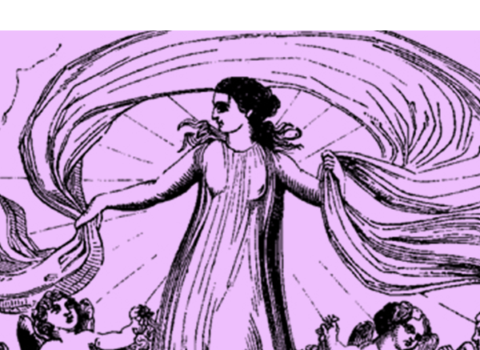From On Violence and On Violence Against Women, which will be published next month by Farrar, Straus and Giroux.
The times we live in oblige any feminist to reckon with the increasing, or certainly increasingly visible, violence against women that we are witnessing. In 2019, domestic killings of adults in the United Kingdom reached a five-year high, and three quarters of the victims were women. In February 2020, it was reported that the number of women killed by a current or former partner had surged by a third, to a fourteen-year high. Disturbingly, these incidences of abuse against women do not seem to decline with a rise in equality. The rate of violence against women in Denmark, Finland, and Sweden, each praised for their gender equality, outstrips that of the United Kingdom.
The statistics are chilling. But I do not want to carry on listing all the forms of rising global violence against women, as is one feminist tactic. Feminism is not served by turning violence into a litany, as if the only way to make us think about such horrors is by verbally driving them home. When we look at a picture of a woman who died on 9/11, the first and only feminist question should not be, to my mind, Who hurt her before? Nor, when we look at the bones of a woman from an ancient civilization, do I want us to see her as inevitably broken. Such a strategy does not help us to think critically.
Violence against women is, I believe, a crime of the deepest thoughtlessness. It is a sign that the mind has brutally closed itself off. The best way for feminism to counter it is to reckon with what the human mind is capable of. Violence is part of the psyche. It is a crime to be detested, but also something that one type of feminism, in the very act of doing so, renders unthinkable. At that moment, feminism becomes complicit in the psychic processes that lead to the enactment of violence.
I take my idea of thoughtlessness from Hannah Arendt, to whom I appeal here as offering a new way of thinking about violence against women in our time.
Arendt suggests that there is something about the process of human thought that is often insufferable, not least because thinking acts as a brake on the fantasy that the world is there to be mastered, and thereby prevents that dangerous fantasy from doing untold damage by running away with itself. For her, violence is a form of radical self-deceit—or “the impotence of bigness,” to recall her evocative phrase—that punishes the world, punishes women, we can say, for the limitations of human power. (The gender implications of her phrase are surely glaring even if she does not draw them out herself.) “What I propose, therefore, is very simple,” she writes at the beginning of The Human Condition. “It is nothing more than to think what we are doing.”
As is often the case with Arendt, such simplicity is deceptive. Thinking has to be fought for. It is threatened from all sides, not least by modern pseudoknowledge that leaves us at the mercy of every possible gadget, “no matter how murderous it is.” The mind is under siege, and thinking is the only restraint against murderous know-how and the cruel silence of sheer violence that mutes both itself and its victims.
Arendt is not, to put it mildly, famous for her contribution to feminism. But almost despite herself, she can be seen as the forerunner of one type of feminist analysis that traces women’s subordination and the violence that is so often its consequence to the division of labor in—or rather consignment of women to—the home. Her political ideal is the Greek space of the polis, or city-state. There, “the household head ruled with uncontested despotic powers.” Freedom belonged exclusively in the political realm, whereas the household was the place of necessity—the base and messy environment of creaturely life (or housework, as we call it today). It is this domain that must be mastered in order for man to be free. Out of this forced discrimination, violence surely follows. It becomes, she writes, the “pre-political act of liberating oneself from the necessity of life for the freedom of world.” That is why to be a slave means not just to lose one’s freedom, but to be subject to man-made violence. And this is also why there is no real sexual division of labor, since such a notion relies on at least a formal assumption of equality between men and women, whereas no such assumption exists. Women and slaves—Arendt is surely hardly condoning the equation—stand in, and for, the place where the necessity of the world is subject to brute mastery.
The key word here is “mastery.” It is for Arendt, in the world and in the heart, a delusion. Thus when she goes on to make the famous distinction between violence and power that is at the center of On Violence, what matters is that a government will have recourse to violence in direct proportion to a decline in its authority and power, a decline that such violence is desperate to redress. (Violence is always desperate.) “Rule by sheer violence,” she writes, “comes about when power is being lost.” State violence, we could say, is the last resort of the criminal (as we saw so cruelly following the protests in Tahrir Square). “We know or should know,” she insists, “that every decrease in power is an open invitation to violence—if only because those who hold power and feel it slipping from their hands . . . have always found it difficult to resist the temptation to substitute violence for it.”
Arendt’s distinction between violence and power is important when thinking about the aforementioned feminism—the one that wishes to align violence with male power, of which it then becomes the inevitable expression. (This makes female power, as Catharine MacKinnon once famously put it, “a contradiction in terms.”) Arendt allows us to see such an equation as the lie that violence perpetuates about itself, since it will do anything—destroy women and the world—rather than admit that its power is uncertain. Women become the scapegoats for men’s unconscious knowledge of their own shared frailty. Such frailty, Arendt writes, takes us to the darkest corridors of life and of the mind, to “the realm of birth and death,” which must be excluded from the public realm because “it harbors the things hidden from human eyes and impenetrable to human knowledge. It is hidden because man does not know where he comes from when he is born and where he goes when he dies.” Violence is man’s response to the fraudulence of his power and the limits of his knowledge.
Impotent bigness indeed.
If we do not make time to reconsider this alignment of violence and power, we will do nothing to end violence in the world, and we will surely be doing violence to ourselves.

















































































































